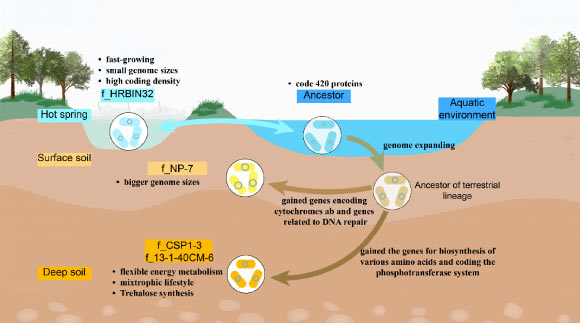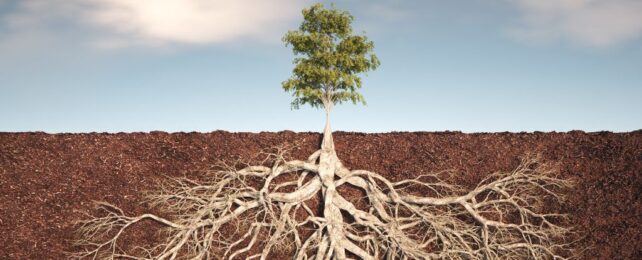The soil under our feet is teeming with mysterious life forms – possibly more than any other habitat on Earth.
Scientists have now identified a whole new phylum of bacteria, which is abundant and widespread in the "dark forest" of our planet's deep soils.
The candidate phylum, called CSP1-3, was first detected in 2006 in Yellowstone's geothermal systems, and in the years since, its relatives have been found in oligotrophic deep soils – like those under tropical rainforests – and in subsurface soils where iron is oxidized.
Using high-quality metagenome data, an international team of researchers has at last put together a comprehensive genomic catalog of this bacterial phylum.
Their findings provide "profound insights" into how these bacteria survive deep underground, living off whatever carbon and nitrogen trickles down from the surface.
The team suspects these mysterious microbes play a significant role in energy and elemental cycles in deep soils, which have existed for less than 10 percent of our planet's history.
"Most people would think that these organisms are just like spores or dormant," explains microbiologist James Tiedje from Michigan State University (MSU), who contributed to the research.
"But one of our key findings we found through examining their DNA is that these microbes are active and slowly growing."

The deep soil samples analyzed by Tiedje and his colleagues came from the United States and China, from depths of up to 22 meters.
CSP1-3 absolutely dominated these hidden ecosystems, making up 60 percent of the communities at some depths (like 17 and 22 meters deep). Tiedje says this sort of domination never occurs in microbial communities on Earth's surface.
"I believe this occurred because the deep soil is such a different environment," he says, "and this group of organisms has evolved over a long period of time to adapt to this impoverished soil environment."
Deep soils are energy-limited and nutrient-deprived, and while this ecosystem is scientifically neglected, recent studies suggest that soil microbes that live here show a much greater diversification than previously recognized.
The microbial populations that live in Earth's surface soils, which extend just 30 centimeters deep, are much more densely packed than populations living up to hundreds of meters deep. But their total population numbers are actually quite similar; deep soil microbes are just more spread out.
While phylum members have likely evolved to make the most of their respective habitats, the authors of the current study say all members have the capability for aerobic carbon monoxide (CO) oxidation. This is a mechanism that can enhance bacterial survival during nutrient limitation.
The phylum also shows signs of hydrogen metabolism.
Both CO and hydrogen are ubiquitous energy sources, the authors point out, and so the ability to metabolize the gases for energy "may confer a major selective advantage" in soils that are highly leached of other nutrients.
In their genomic catalog, Tiedje and colleagues, led by microbiologist Wenlu Feng from China's Northwest A&F University, found one particular lineage that seems to have lived in an aquatic habitat before adapting to colonize the soil.
When making this evolutionary jump, the microbes could have acquired a range of genes involved in carbohydrate and energy metabolism. This probably helped them deal with frequent fluctuations in nutrient availability.
"While these studies have provided preliminary insights into the metabolic potential of the CSP1-3 phylum, systematic efforts to interpret its phylogeny, ecological significance, environmental adaptations, and evolutionary trajectory remain unknown," write the authors.
By some estimates, as many as 99.999 percent of Earth's microbes are unknown to science, and of the trillion species thought to exist, more than 90 percent may reside below the surface. CSP1-3 is one mystery of many.
"CSP1-3 are the scavengers cleaning up what got through the surface layer of soil," Tiedje says. "They have a job to do."
Tiedje, Feng, and colleagues now want to try growing CSP1-3 microbes in the lab to see how they actually carry out their work.
The study was published in PNAS.
